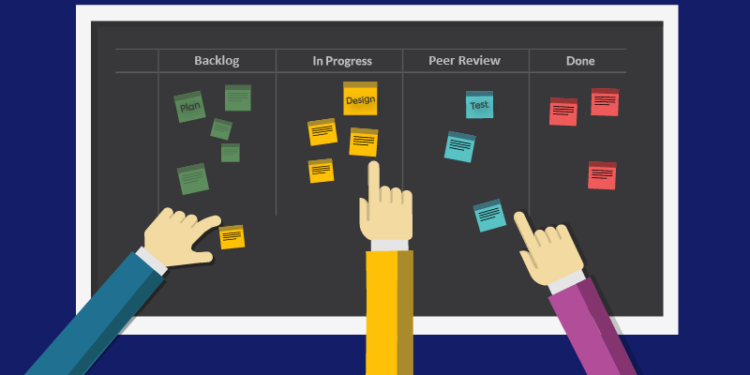Your client is looking for a good investment — more bang for their buck. That means quality products, continuous updates, and a company that offers them great value when it comes to their software. Choosing the right development model is critical. In this article, we’ll investigate the differences between two of these models — Agile SDLC and Traditional SDLC
Page Contents
What is a traditional SDLC model?
A software development life cycle – SDLC – is a process that is used to develop software products. It consists of a series of phases, each phase building on the previous one.
The traditional SDLC can be used as a project management tool, but it also has many other benefits. For example, it can help ensure that the project is completed on time and within budget by establishing a sequence of tasks and milestones. It also helps to ensure that the software product meets requirements and standards throughout its development lifecycle. Finally, it can help identify any potential risks or problems early in the process so they can be addressed before they become major issues.
The SDLC model is one of the most widely used models for developing software products because it provides a clear path for creating quality products while meeting deadlines.
Phases of Traditional SDLC models
The SDLC model is a process that helps organizations to develop and maintain software. It goes through four phases: analysis, design, development, and maintenance.
- The first phase is the analysis phase. The goal of this phase is to understand the problem that needs to be solved by the software. This includes understanding what type of software will best solve the problem, defining the scope of the project, identifying stakeholders who will be affected by it, and defining success metrics.
- The second phase is the design phase: In this phase, all requirements are identified and documented, as well as how they should work together to achieve a goal or meet a need.
- The third phase is the development phase which includes coding and testing of the software for it to work properly with all requirements identified in previous phases.
- The fourth Phase is launch and updates: the software is handed over to end-users and given feedback and how it behaves, updates are designed and released
What is the Agile SDLC model?

Source: monday.com
Agile SDLC is a software development methodology that is based on the idea that an organization can deliver the best products possible by adapting to changes and by moving from one stage to the next in a flexible way. The methodology was created by Kent Beck along with 17 individuals. Kent Beck was an author, consultant, psychologist, and general Jack Of All Trades that had worked for some of the biggest brands in the world.
The main dynamics of the methodology adapted not only to SDLC models but just about any industry, is based on taking small steps towards a goal – in many cases sprints – instead of taking one large leap. This allows team members to learn from their product, better understand the result, introduce changes, fix bugs and issues, adapt to trends, and incorporate feedback, not only from stakeholders but from end-users.
Phases of the Agile SDLC model
- Inception
- Elaboration
- Construction
- Transition
- Operation
Agile SDLC vs Traditional SDLC models
Agile SDLC is a software development methodology that is based on iterative and incremental development. It was created to assist software developers in managing the complexity of the project and allow them to deliver their products quicker. As a whole, Agile SDLC is a more flexible approach to developing software —- where requirements are constantly changing and the project team can’t predict all the issues that might arise.
Traditional SDLC, on the other hand, is a more structured approach where all requirements are known before starting the project, scope changes are minimized and deadlines are met. In many cases, this method doesn’t adapt well to bugs, security breaches, or any curveball. One of the biggest issues is that due to schedules and product launches, and the fact that hiccups only arise after testing, traditional SDLC models leave what is known as a “technical debt” — this is when a company releases a software knowing full well that there is an issue or bug. Technical debt is backlogged into the system and companies have to fix them with updates. The former is extremely risky since any issue might end up hurting the company’s brand image.
Other differences between Agile and Traditional SDLC models
Agile SDLC
Here’s a checklist of some of the biggest benefits Agile has
- Iterative/incremental development.
- Flexible approach.
- Requirements are constantly changing.
- The project team can’t predict all issues that may arise.
Traditional SDLC
Traditional as a whole is a much more structured approach — there are deadlines to be met and a schedule to stick to. It is strict and in many cases that might be a benefit for certain companies. In most cases, companies with years of experience opt for a traditional method since they have already faced and overcome most issues and have a proven track record of planning.
Traditional SDLC models are more:
- Structure
- Better at keeping deadlines
- Far more rigorous
- If properly handled they can be less costly.
Importance of choosing the right SDLC model

Source: whitesourcesoftware.com
Choosing the right SDLC model can be difficult as there are many factors to consider. The most important factor is the organization’s objectives and what they want to achieve from their software development. Agile and traditional are just one of the many models. Aside from those two, there are also:
- The Waterfall model is a sequential process that starts with requirements analysis, then design, followed by coding, testing, and finally deployment. This process is linear and does not allow for feedback loops or changes in direction.
- The Spiral model has continuous phases of requirements analysis and design that overlap, making it a hybrid between waterfall and Agile.
Whichever you choose, even if you build one yourself based on your experience it is important to have a protocol in place, a model by which you can manage your SDLC.





